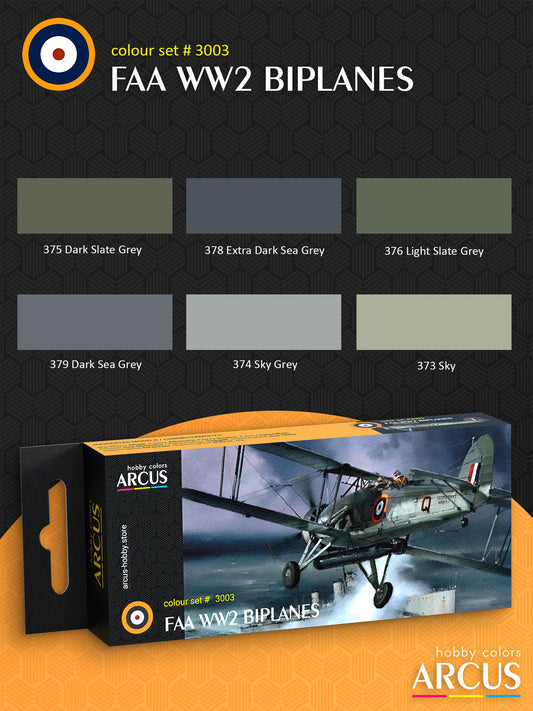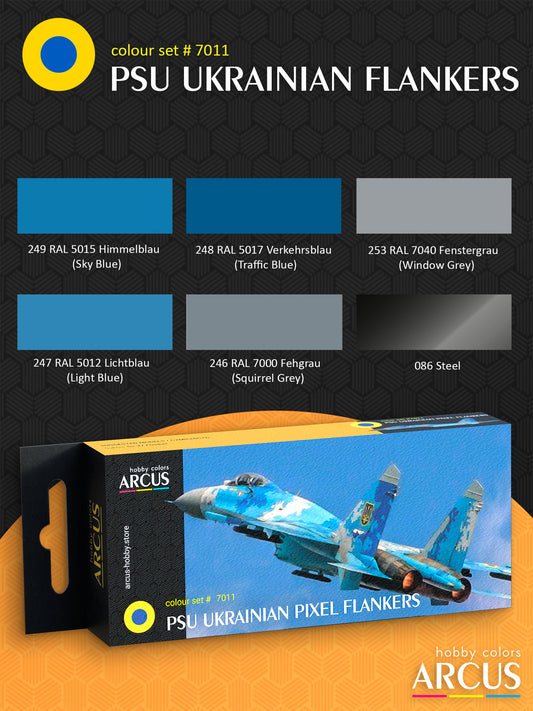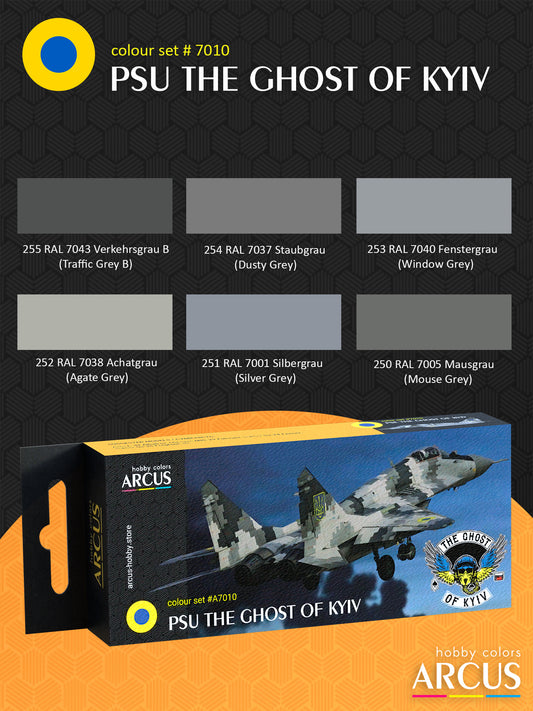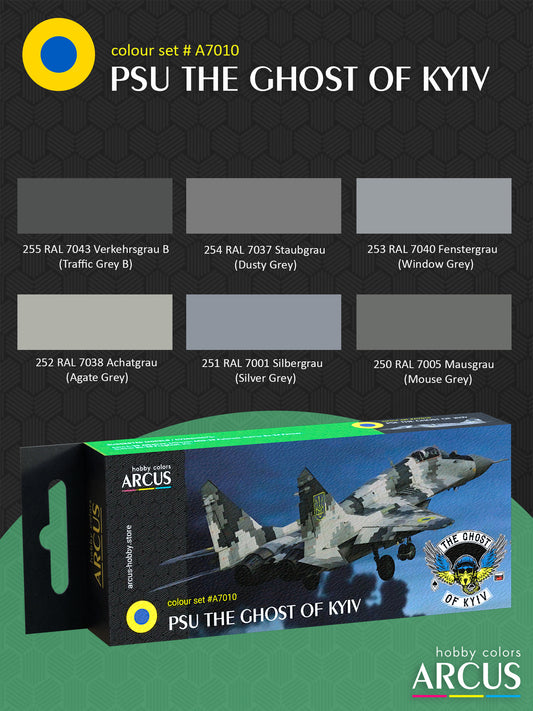WW2 German Army Colors (Wehrmacht Heer)
The widest range of authentic paints for WWII German Army vehicles. High-quality acrylic or enamel paints for scale models -10 ml (0.33 oz). Worldwide shipping
WW2 German Army Colors (Wehrmacht Heer)
On March 16, 1935, a pivotal moment in history occurred with the enactment of the "Law on the Reconstruction of the Wehrmacht" (Gesetz über den Aufbau der Wehrmacht). This law marked the transformation of the Reichswehr, the armed forces of the Weimar Republic, into the Wehrmacht. By the summer of 1935, precisely on June 1st, the ground forces of the Reichswehr, known as the Reichsheer, underwent a nomenclature shift and were renamed the Heer. The Wehrmacht, under the supreme command of the Oberkommando der Wehrmacht (OKW), encompassed not only ground forces but also the Luftwaffe and Kriegsmarine.
Operational History of the German Army in the Pre-War Period and During WWII
The combat history of Germany's Heer, or ground forces, traces its roots back to its inception. In March 1935, elements of the Wehrmacht entered the Rhineland, a move that directly challenged the Treaty of Versailles and the Locarno Treaties. This audacious act posed a challenge to France, which struggled to mount a substantial response.
In July 1936, the Spanish Civil War erupted, enduring until 1939. Germany, along with Italy, actively supported the Nationalists led by General Franco with technology, armaments, and personnel. The famous Condor Legion, comprising around 5,500 personnel and an assortment of 27 different aircraft types, tanks (approximately 180 PzKpfw I), artillery, and other equipment, was dispatched to aid the Francoists. This support extended to around 50,000 personnel from various units, solidifying Germany's involvement in the conflict.
March 1938 witnessed the annexation of Austria into Germany. The German ground forces virtually annexed Austria without encountering any significant Austrian resistance. Following a plebiscite, Austria was absorbed into Germany, an event referred to as the Anschluss.
Six months after the Anschluss, German forces invaded Czechoslovakia and annexed the Sudetenland. This campaign evolved into the establishment of a German protectorate over Bohemia and Moravia in March 1939.
On September 1, 1939, German forces invaded Poland, marking the commencement of World War II. Poland fell within a month, despite resolute Polish resistance.
Following the victory in Poland, Germany launched a campaign to capture Denmark and Norway in April 1940. Denmark was captured in a mere six hours, while the Norwegian campaign lasted until June and concluded with the occupation of Norway. It was during this Norwegian campaign that German forces first clashed with British and French armed forces.
On June 10, 1940, German forces initiated a broad campaign to capture Belgium, the Netherlands, and Luxembourg. By May 14, the Netherlands had capitulated, and on June 4, 1940, Belgium surrendered, opening the path for Germany's invasion of France. On June 10, 1940, Italy joined the war on the side of Germany, deploying the 22-division strong Army Group West to France, totaling over 300,000 troops. The campaign culminated in France's surrender on June 22, 1940.
In July 1940, German forces commenced the Battle of Britain, an aerial conflict that persisted until October 1940. Eventually, the German high command decided to cease mass bombings of Britain due to their ineffectiveness.
In February 1941, the famous Afrika Korps, commanded by Erwin Rommel, was sent to North Africa to bolster the Italian army, which had suffered a series of defeats. Rommel's leadership helped turn the tide in favor of the Axis powers in the North African theater.
On April 6, 1941, German forces invaded Yugoslavia, which capitulated after 11 days. Simultaneously, Germany attacked Greece, and by the end of April, it had achieved a complete victory. A month later, on May 31, 1941, Crete was captured.
In June 1941, Germany invaded the Soviet Union, and by December 1941, had conquered the Baltic states, Belarus, and much of Ukraine, coming perilously close to Moscow. The harsh winter weather and determined Soviet resistance halted the German advance. The Battle of Stalingrad, which occurred from July 17, 1942, to February 2, 1943, resulted in a decisive defeat for the German forces and marked a turning point in World War II.
On November 8, 1942, the Allies successfully conducted Operation Torch and, following their victory, defeated Axis forces in North Africa on May 13, 1943, capturing approximately 240,000 Axis soldiers.
The success in Africa enabled Operation Husky, the Allied invasion of Sicily, which evolved into further advances into mainland Italy, contested by Italian and German armed forces.
On June 6, 1944, the Allies launched Operation Overlord, landing on the shores of Normandy. This event initiated the liberation of France, the Netherlands, and Belgium.
From 1943 onward, German forces primarily engaged in defensive actions against the advancing Allied forces from the west, as well as against the Soviet Union on the eastern front.
On May 7, 1945, General Colonel Jodl, Chief of the German Armed Forces High Command, acting on behalf of the head of state, Admiral Dönitz, signed the act of unconditional surrender of Germany in Reims, at the headquarters of Allied Supreme Commander Dwight D. Eisenhower, at 2:41 a.m. According to the act, hostilities on the entire European front would cease from 11:01 p.m. on May 8. The last Wehrmacht units that continued to resist were disarmed or surrendered by September 1945. The Wehrmacht was officially dissolved by Proclamation No. 2 of the Allied Control Council on September 20, 1945.
Only a decade after the conclusion of World War II, Germany was able to reestablish its armed forces, known as the Bundeswehr.
Evolution of the German Heer Wehrmacht Camouflage
When it comes to the history of camouflage for Heer vehicles, there's a fascinating journey through various paint schemes.
At the inception of the Wehrmacht, military vehicles still adhered to the standard multicolored camouflage, known as Buntfarbenanstrich, which was inherited from the Reichswehr. Non-combat vehicles were typically painted in a single-color gray shade known as Feldgrau.
Then, in 1937, a new camouflage scheme called Gerätanstrich dunkelgrau/dunkelbraun, Anstrich dunkelgrau/dunkelbraun, Zweifarbenanstrich, or simply neuer Buntfarbenanstrich was introduced. This new directive prescribed painting military equipment in a dark gray color with irregular dark brown spots. However, starting in the summer of 1940, the use of dark brown paint for German vehicle camouflage was discontinued, rendering the camouflage of German army vehicles entirely dark gray.
During winter, vehicles were camouflaged with a removable white paint to blend in with snowy landscapes, enhancing their concealment.
The beginning of the African campaign demanded a new approach to camouflage. In March 1941, a new two-color desert camouflage was introduced. It featured yellow-brown and grayish-green (essentially mustard-ochre) colors. This camouflage was applied over the standard gray or gray-brown camouflage of German armored vehicles. A year later, in March 1942, both colors of the desert camouflage were updated.
In 1943, due to the ineffectiveness of the dark gray camouflage, a new base color was introduced for German military vehicles - Dunkelgelb (dark yellow). Alongside this, a new camouflage scheme known as Tarnanstriche was introduced. It consisted of the primary dark yellow color with irregular spots of red-brown and olive-green.
By January 1945, olive green became the new base color for camouflage, although the actual colors in the camouflage schemes remained consistent, with only the patterns changing.
This historical evolution of camouflage paints a vivid picture of how the German Army adapted its vehicle concealment strategies throughout World War II.
German Heer's Color Standards
The German army, known as Heer, established its color standards in an intriguing historical journey.
Back in 1927, the Reichs-Ausschuß für Lieferbedingungen (Imperial Committee for Delivery and Quality Assurance) introduced a palette of 40 colors labeled as "RAL 840."
Prior to 1941, the colors used for armored vehicles were simply denoted by their names and sequential numbers, such as Grün Nr. 28 or Schwarz Nr. 5.
On February 10, 1941, a significant change occurred as the camouflaging colors adopted the format of four-digit numbers, now serving as a distinctive marking system. For instance, dunkelgrau RAL 7021 or Dunkelgelb RAL 7028. These RAL standards persist today, effectively utilized not only for military vehicles but also in civilian applications, ensuring color uniformity across various contexts.

Check out our paint sets!
View all-
Paint Set 3003: Fleet Air Arm – WWII Biplanes
Vendor:Arcus HobbyRegular price $10.84 USDRegular priceUnit price / per$10.84 USDSale price $10.84 USD -
Vendor:Arcus HobbyRegular price $10.84 USDRegular priceUnit price / per
$10.84 USDSale price $10.84 USD -
Paint Set 7011: Ukrainian Air Force – Pixel Flankers
Vendor:Arcus HobbyRegular price $10.84 USDRegular priceUnit price / per$10.84 USDSale price $10.84 USD -
Paint Set 7010: Ukrainian Air Force – Ghost of Kyiv
Vendor:Arcus HobbyRegular price $10.84 USDRegular priceUnit price / per$10.84 USDSale price $10.84 USD








